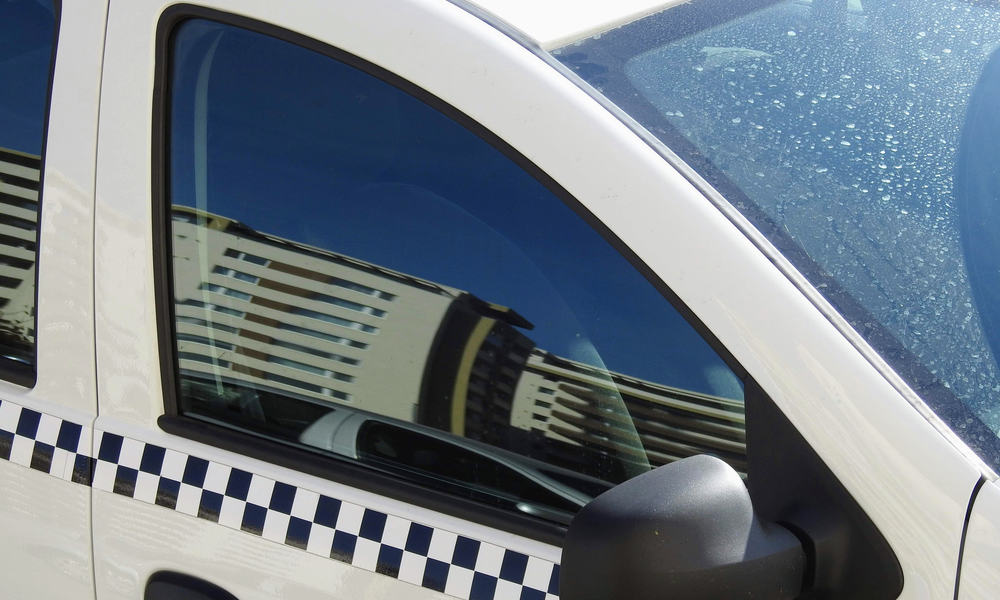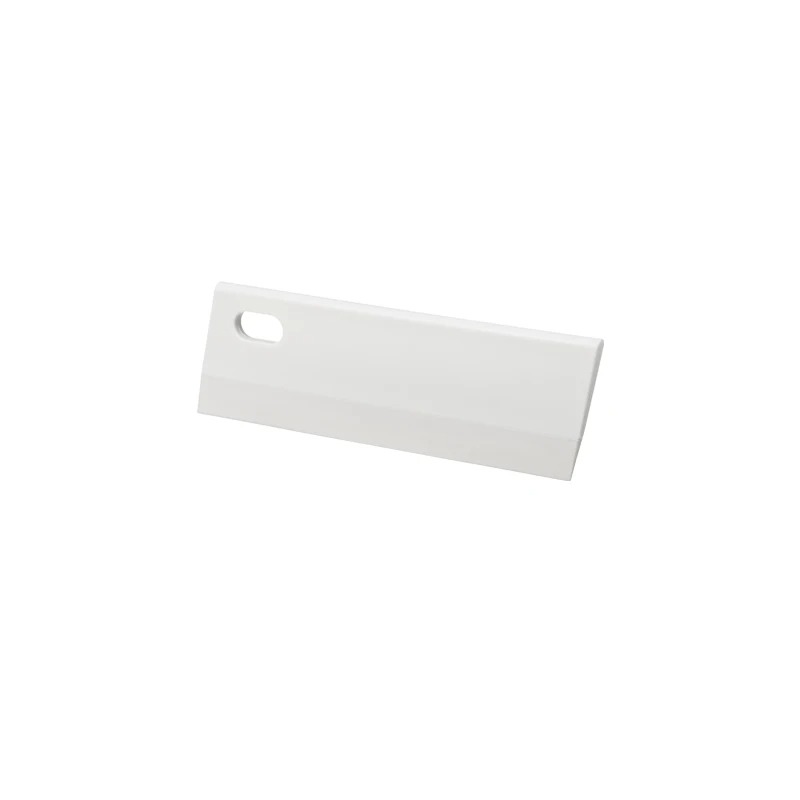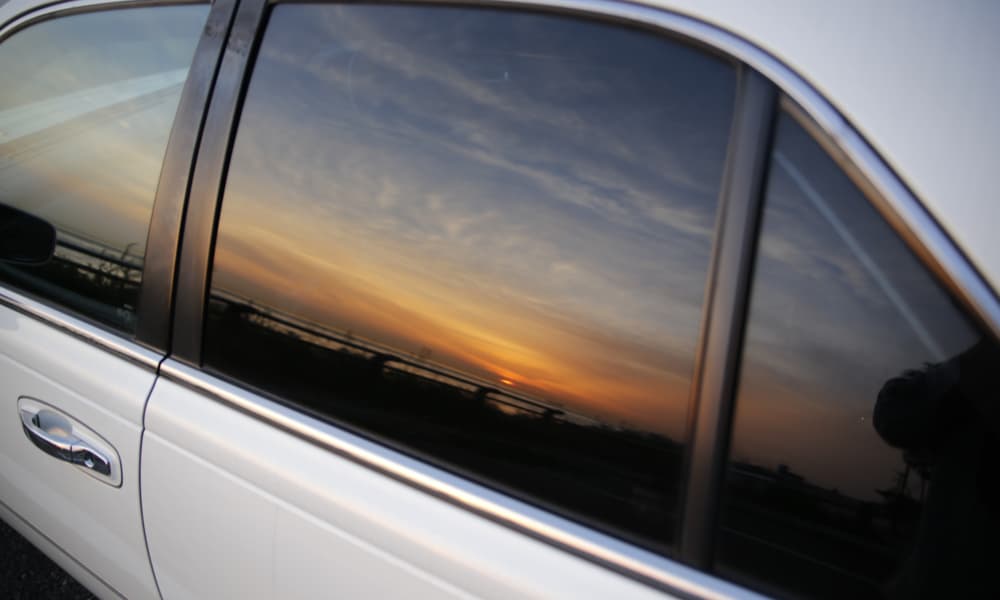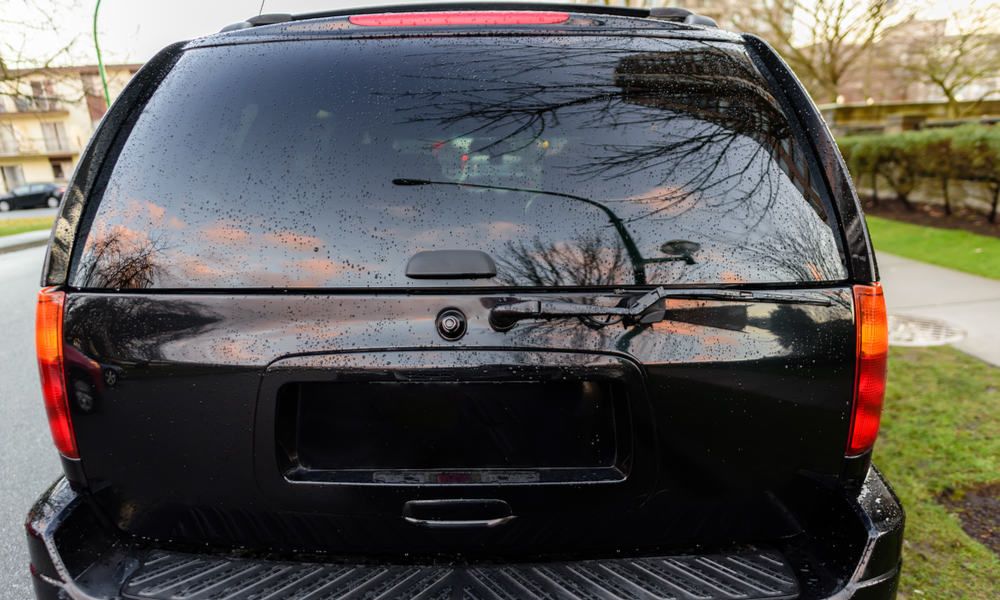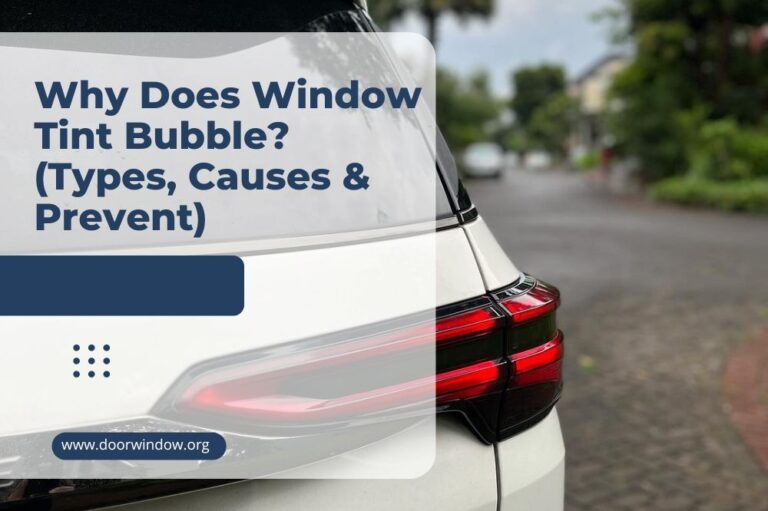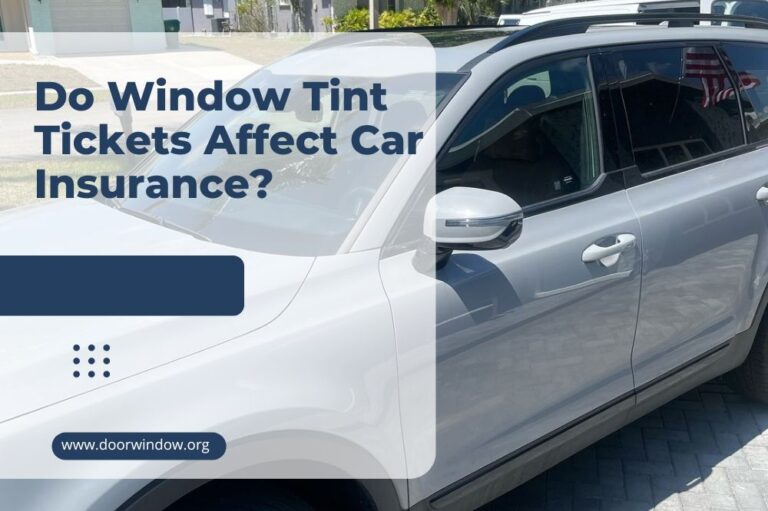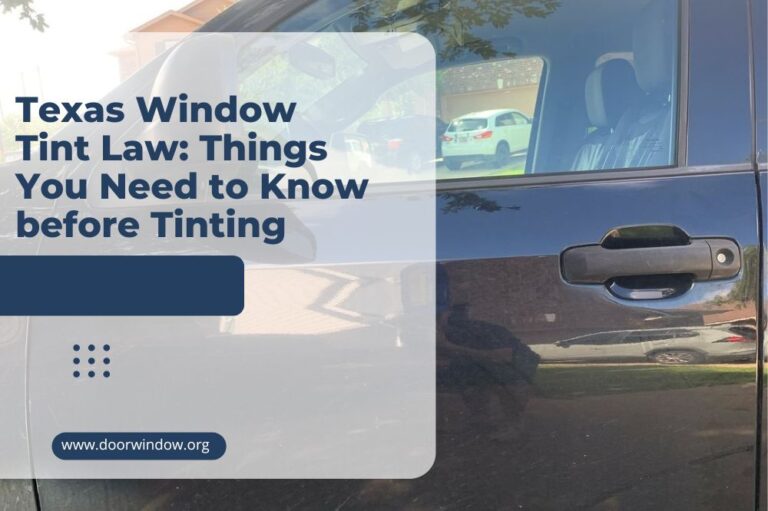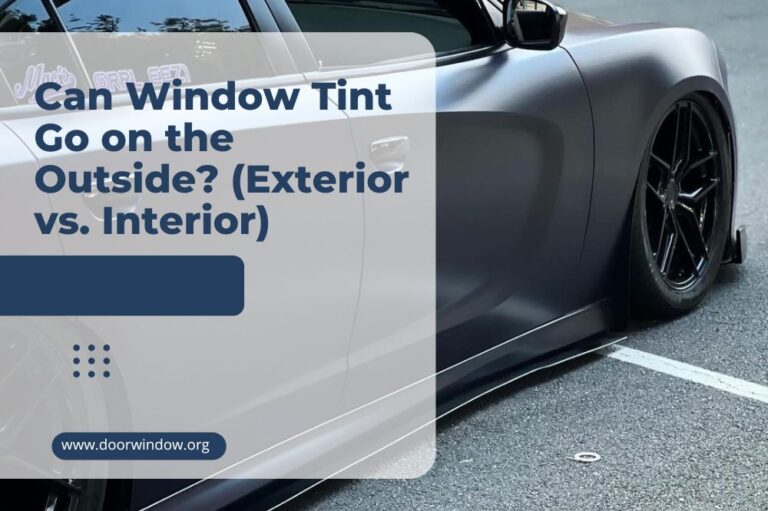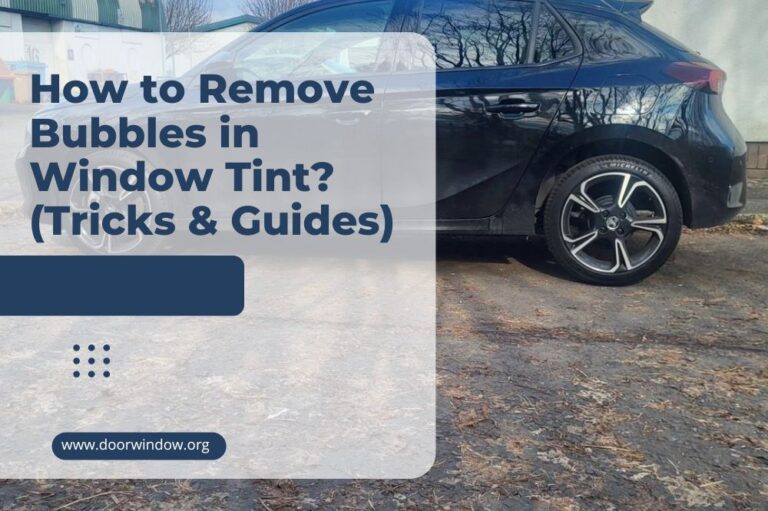California Window Tint Law: Everything You Need to Know
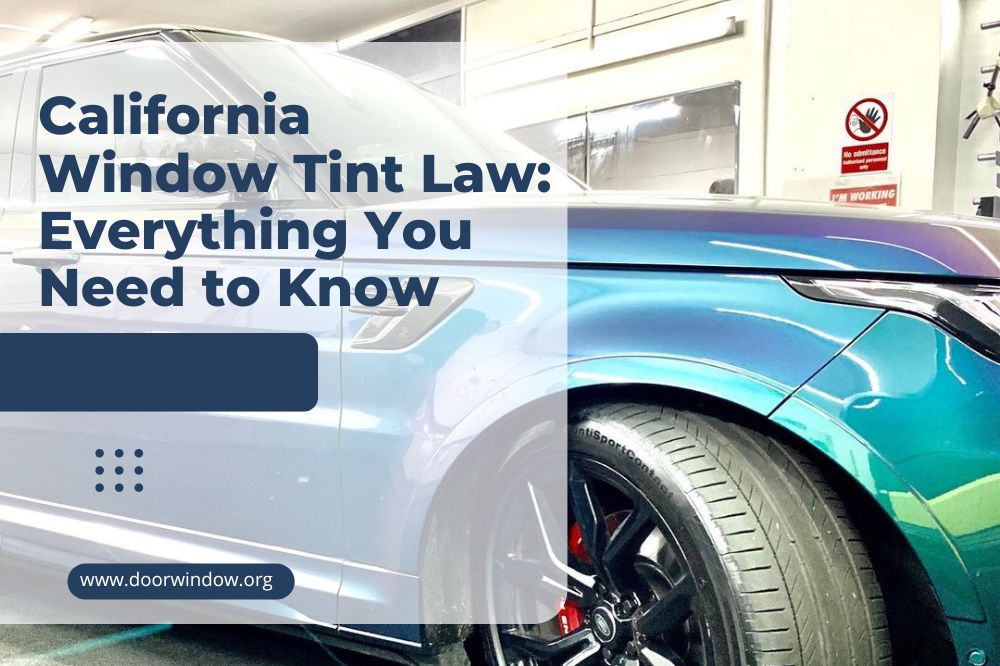
Many people enjoy modifying their cars, and one of the most popular modifications is to tint the windows. Tinting windows can help protect you from the sun’s rays – and it also gives your vehicle a particularly stylish look.
However, you need to be careful, since many states have restrictions on how far you can go when tinting your windows – and for anyone living in the Golden State, here, we look at California window tint law.
How is window tint measured?
Since any effective laws must be based on an objective way of determining the amount of tint, the measurement used is Visible Light Transmission – or VLT for short.
VLT measures the amount of light that can pass through a tinted window. For example, a window rated at 50% allows 50% of light to pass, 75% allows 75% to pass and 25% allows 25% to pass.
This means that the lower the number, the darker the tint. A window rated at 5% would be extremely dark since only 5% of light would be able to pass through it.
Another aspect related to this is how reflective a window is allowed to be – and we will deal with this below along with each of the different types of car window.
What are the regulations in California?
California first enacted window tint laws in 1999. The current laws apply to all kinds of vehicles, including regular passenger vehicles as well as multiple-purpose vehicles like SUVs and others.
Different laws apply to the different windows in the vehicle. They are as follows:
1. Front windshield
Most of the front windshield is not allowed to be tinted because the driver needs to have a clear view of the road. However, the top section of the windshield – sometimes known as the “eyebrow” – is allowed to be tinted with a non-reflective strip.
The width of the strip is limited and must cover no more than the top 4” of the window. This allows it to block the sun and prevent the driver from being dazzled while ensuring the field of vision is not reduced.
2. Front side windows
The front passenger windows are allowed to be tinted, but the VLT rating is not allowed to be below 88%.
However, if you combine factory tinted windows with an aftermarket film, the minimum permitted VLT rating is 70%.
This means by combining factory tinted windows and an aftermarket film, you can have darker front windows than if you just apply a film alone.
In terms of reflectivity, the windows are not permitted to be more reflective than regular untinted windows.
3. Back side windows
Since the back side windows have less effect on the driver’s field of vision, there is no limit on the lowest VLT rating – in other words, you are allowed to have them tinted as dark as you like.
In terms of reflectivity, however, they are not permitted to be any more reflective than regular untinted windows.
4. Rear window
The rear window can be tinted, and no restrictions apply. This means, like the back side windows, you can have the back rear window tinted as dark as you like.
Other important regulations
In addition to how dark you are allowed to have your car windows tinted, there are some other related regulations that you must comply with. They include the following:
Side mirrors
If you have a tinted rear window, dual side mirrors become a legal requirement to allow the driver to see the road behind the vehicle.
Colors
Certain restrictions exist concerning the colors you are allowed to use for tinting windows.
In short, in California, you are not allowed to tint your windows in shades of red, amber or blue. Any other colors of tint are permitted.
Documentation
If you have tinted windows, you are required to possess the necessary documentation.
Manufacturers of the film used for tinting windows must certify their products to prove that they are in compliance with state laws.
Furthermore, the driver of a car with tinted windows is required to be able to produce this certification if pulled over by the police.
Tint sticker
In addition to the certification for the tinted windows provided by the manufacturer, California state law requires a sticker to be displayed giving details of the manufacturer – including the company address.
Medical exemptions
The state of California allows exceptions to these laws for people with special medical requirements.
These exemption laws have been in force since September 2017, and reasons for an exemption may include conditions such as lupus, sunlight allergy, photosensitivity and melanoma.
According to the exemption law, the driver of a car with more darkly tinted windows must be able to produce the document provided by the tinted window installer as well as a medical note from a dermatologist giving details of the special requirements.
Specifically, the relevant section of the bill states:
The driver has in his or her possession, or within the vehicle, a certificate signed by the installing company certifying that the windows with the material installed meet the requirements of this subdivision and the certificate identifies the installing company and the material’s manufacturer by full name and street address, or, if the material was installed by the vehicle owner, a certificate signed by the material’s manufacturer certifying that the windows with the material installed according to manufacturer’s instructions meet the requirements of this subdivision and the certificate identifies the material’s manufacturer by full name and street address.
Why do these laws exist?
There are a couple of reasons why laws determining how dark you are allowed to tint your windows exist in most states in the US.
Perhaps the first and most obvious reason, and one we’ve already alluded to several times, is that dark tinted windows can impede the driver’s field of vision.
It is important that a driver has a clear view of everything that is happening around them, and a tinted windshield or front side windows can significantly impair this.
This is especially true at night since tinted windows wouldn’t allow the light from other cars’ headlights or taillights to pass through the windows, making it much harder to see them. This can obviously seriously increase the chance of collisions.
Another reason is that tinted windows don’t allow traffic cops to see what is going on in the car. If they pull someone over for a routine speeding violation or other minor infringement, they need to be able to see inside the car for safety reasons.
They never know who is in the car they’ve pulled over, and the driver could be armed. If the driver is wanted for a more serious crime, being pulled over for a routine stop by the traffic police could cause them to panic, and this could put the police officer’s life in danger.
This is not simply a hypothetic argument, either. Police officers have been shot before in exactly this kind of situation, so for this reason, traffic cops want to be able to see into any car they are approaching.
What happens if your window tint is too dark?
If your window tint is too dark, you are likely to get pulled over by the cops. In practice, this will probably only happen if your windows are excessively tinted, but if a cop suspects you are in contravention of the tinting laws, they may decide to check your windows.
Nowadays, police carry small portable devices that can test the tint of your windows quickly and accurately. The device measures the amount of light that passes through the tinted windows (the VLT), and if it is too low, you will be issued with a ticket.
How much is the fine?
In California, the first time you are caught with overly dark windows, you will probably be issued with a $25 fine and ordered to remove the tint. However, if you fail to do so and receive one or more tickets for the same offence, the amount you have to pay will go up.
Alternatively, if you are deemed to have committed an infraction (an offence considered less serious than a misdemeanor or a felony), you may be issued with a $197 fine directly.
In any case, it is best to be aware of the relevant regulations and to ensure you are not breaking any laws with your tinted windows.
At the very least, if you find yourself being pulled over frequently because your windows look too dark, you might consider having the tint removed simply to avoid the hassle of being stopped by the cops so often.
Be aware of the relevant laws to avoid trouble
If you want to stay out of trouble but still want to tint your windows, the best advice is to make sure you understand the law.
That way, you can ensure you are not in contravention of the relevant regulations, allowing you to avoid being pulled over by the police every time they see you.


